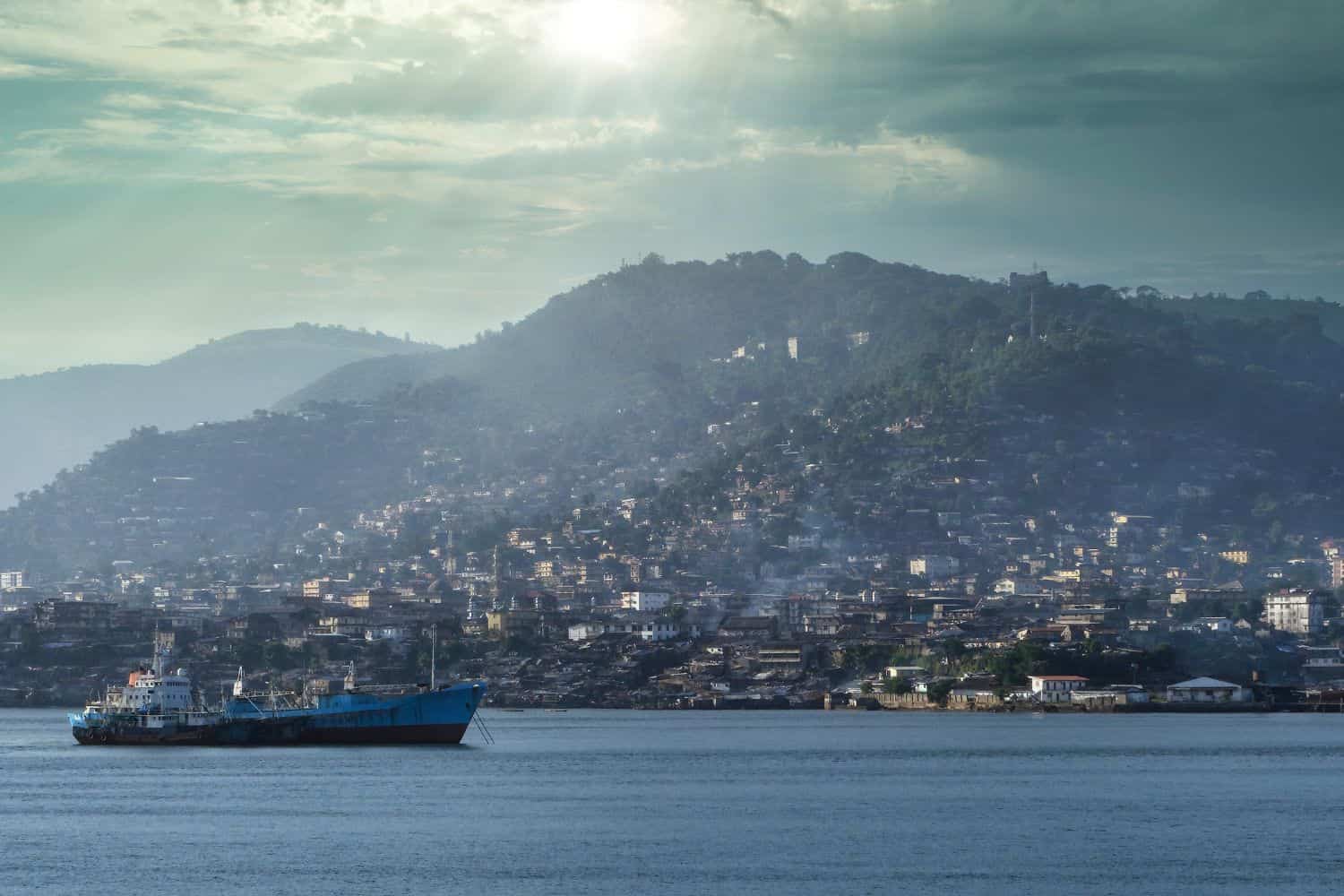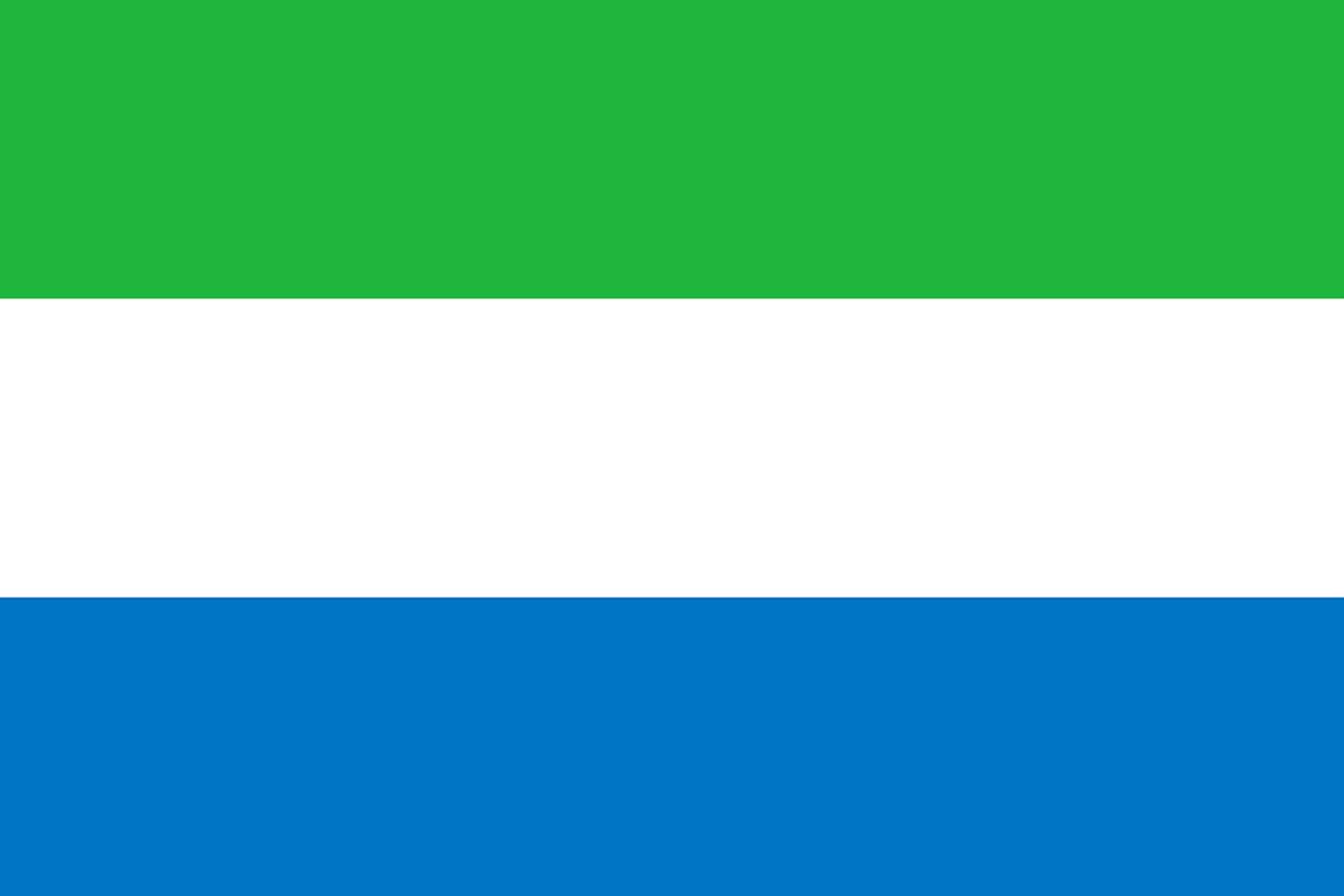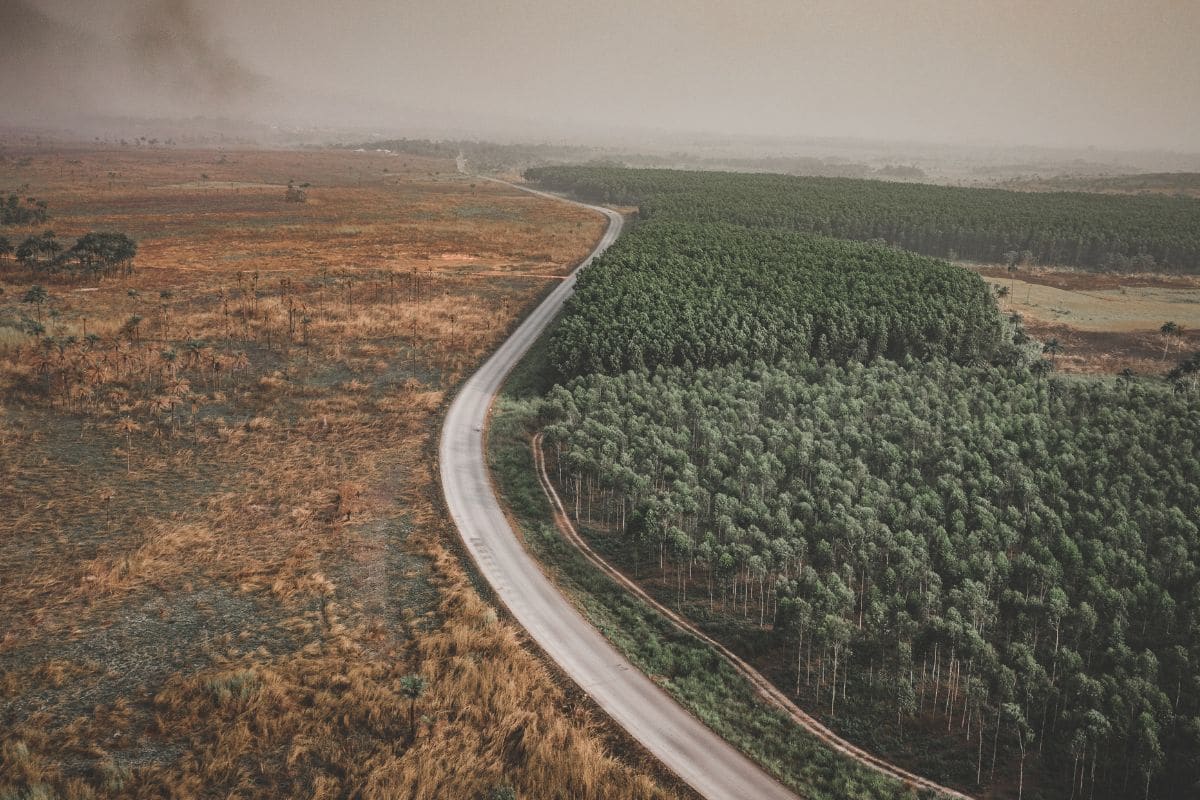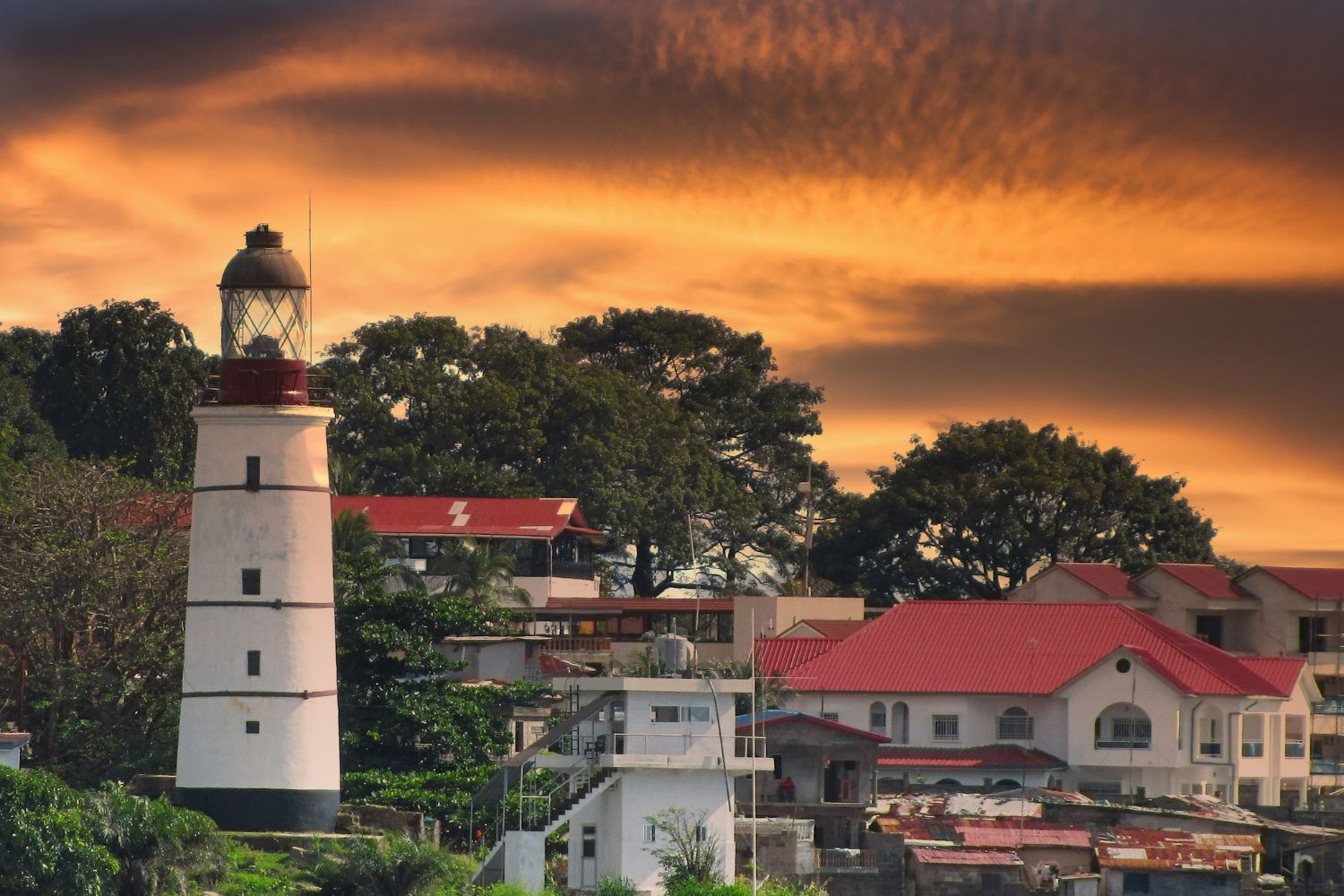Table of Contents
The geography of Sierra Leone is a captivating blend of diverse landscapes and historical significance. Located in West Africa, this nation’s geographic position has been instrumental in shaping its history and cultural identity.
Tucked on the southwestern coast of the continent, Sierra Leone’s geography invites curious travelers with its lush rainforests, impressive mountain ranges, and pristine coastal regions. From trekking the heights of the Loma Mountains to diving into the cultural tapestry of Freetown, Sierra Leone’s diverse landscapes and deep history provide an unforgettable adventure for visitors searching for a distinct and enriching experience.
Sierra Leone physical geography depicts a spectrum of stunning natural wonders. From the mesmerizing Banana Islands, showcasing the nation’s rich coastal heritage, to the diverse ecosystems that range from dense tropical forests to marshy mangroves, Sierra Leone stands as a testament to nature’s magnificence.
Top Geographic Features of Sierra Leone
- Loma Mountains: These are the highest mountains in Sierra Leone, located in the north-central part of the country. The tallest peak, Loma Mansa (Bintimani), is an iconic landmark in the region.
- Rokel River: One of Sierra Leone’s most important rivers, the Rokel flows from the Loma Mountains to the Atlantic Ocean, playing a vital role in the country’s water resources and supporting various ecosystems.
- Freetown Peninsula: This western coastal region of Sierra Leone is characterized by its beautiful beaches, such as Lumley and Lakka, and the surrounding mountainous terrain.
- Gola Rainforest: Located in the southeast, this rainforest reserve is a biodiversity hotspot, home to numerous bird species, primates, and other wildlife.
- Bullom Shore: Situated along the coast, this area is characterized by its mangrove forests, wetlands, and diverse marine life.
- Moyamba District Wetlands: A significant wetland area in the southern part of Sierra Leone, crucial for its rich biodiversity, especially for birdlife.
- Sherbro Island: Located in the southwest, this island and its surrounding waters are known for their unique marine and bird life.
- Outamba-Kilimi National Park: Situated in the northern region, this park boasts a variety of wildlife, including elephants, chimpanzees, and various bird species.
- Banana Islands: A group of islands off the coast near Freetown, they offer beautiful beaches and are rich in history, having played a role in both the pre-colonial and colonial periods.
- Sierra Leone River Estuary: The point where the Rokel River meets the Atlantic Ocean, forming a massive estuary that is vital for the country’s fisheries and commerce.
These Sierra Leone geographic features play a crucial role in shaping Sierra Leone’s landscape, climate, and cultural history, making them essential elements in defining the country’s geography.
Sierra Leone Geography
Exploring the Sierra Leone National Geographic canvas reveals an awe-inspiring variety of geographic features. From the lush rainforests to the golden beaches of the Atlantic coast and the fertile lands of the interior, the country presents a mesmerizing tapestry of natural wonders.
- Mountain Ranges – The Crown of Diversity: Just as documentaries often spotlight magnificent mountain ranges, Sierra Leone is home to the Loma Mountains. These verdant heights not only enhance the nation’s scenic allure but also host unique biodiversity and have molded its cultural legacy.
- Beaches – A Symphony of Sand and Sea: Sierra Leone’s Banana Islands, with their pristine beaches, mirror the paradisiacal landscapes captured in travel brochures. These sun-kissed shores, embraced by the vast Atlantic, reflect the region’s coastal beauty.
- Rainforests – Lungs of West Africa: As documentaries emphasize vast ecosystems, Sierra Leone’s rainforests represent dense green expanses teeming with life. This lush region narrates tales of traditions and the nation’s environmental riches.
- Historical Sites – Unveiling the Past: Sierra Leone’s historical landmarks, like Bunce Island, bring forth memories of journeys that trace the roots of the transatlantic slave trade. These remnants stand as a testament to the nation’s poignant history.
- Ethnic Diversity – A Cultural Tapestry: In the vein of National Geographic’s emphasis on diverse cultures, Sierra Leone is a blend of ethnic groups, including Temne, Mende, and Limba communities. Each group offers unique traditions, languages, and customs, weaving a lively cultural fabric.
- Wildlife – A Sanctuary for Nature: Sierra Leone’s protected areas, such as the Tiwai Island Wildlife Sanctuary, echo the dedication to wildlife conservation. These zones provide essential habitats for a myriad of species, conserving biodiversity in a varied setting.
- Geological Wonders – A Natural Display: The nation’s geological treasures, like the diamond-rich terrains, exhibit Sierra Leone’s natural allure amidst the sweeping landscapes. These deposits highlight the dynamic interplay of nature over millennia.
- Remote Exploration – Uncharted Regions: The remote and untouched regions of the Upper Guinea rainforest invite explorers, reminiscent of adventures into unknown realms. This extensive area offers a window into pristine ecosystems and distinct habitats.
Sierra Leone’s geographic features are accentuated by its stunning Atlantic coastline. These golden beaches, which span the western edge of the country, form a mesmerizing foreground to the nation’s varied terrain. Historic routes, once trodden by traders and explorers, meander through this vibrant landscape.
Meandering gracefully through the Sierra Leonean terrain are the bountiful rivers like the Rokel and Moa, indispensable for agriculture and sustenance. Moreover, the dense rainforests and fertile plains further define the nation’s exceptional geography.
Sierra Leone Geographic Location
Sierra Leone’s geographic location is strategic, and its position has played a significant role throughout history. Located on the West African coast, the country has been a nexus for trade, culture, and ideas, emphasizing its historical importance.
Borders of Sierra Leone
Sierra Leone shares borders with two countries. Here is Sierra Leone’s physical geography with the neighboring countries and the approximate total length of each border:
- Guinea: The border between Sierra Leone and Guinea is approximately 762 kilometers long, making it the longest international border for Sierra Leone.
- Liberia: The border between Sierra Leone and Liberia is approximately 299 kilometers long.
| Sierra Leone Neighboring Country | Border Length (Approximate) |
|---|---|
| Guinea | 762 kilometers |
| Liberia | 299 kilometers |
These international borders define Sierra Leone’s connections to different regions and contribute to the country’s geopolitical significance as a crossroads in West Africa.
Geography of Freetown Sierra Leone
As the capital city of Sierra Leone, Freetown is a captivating microcosm of the country’s human geography. Here, various ethnic groups, including Temne, Mende, Limba, and Krio, coexist, contributing to the city’s vibrant cultural tapestry.
Freetown, the capital city of Sierra Leone
- City of Contrasts: Freetown is known for its stark contrasts, where modern buildings coexist with traditional neighborhoods, creating a unique blend of old and new.
- Atlantic Ocean: The Atlantic Ocean borders the city, playing a significant role in its trade and transportation.
- Freetown’s Elevation: The city is located near sea level, with lush green mountains surrounding it.
- Green Spaces: Freetown is home to several beautiful parks and gardens, including the Hill Station Club, offering a serene escape amidst the bustling city.
- Freetown’s Historical Significance: With a history deeply rooted in the transatlantic slave trade and colonial times, Freetown has witnessed various epochs and played a pivotal role in West African politics and trade.
- Diverse Architecture: The city showcases a diverse architectural heritage, reflecting influences from colonial British, Krio, and modern styles.
- Local Music Culture: Freetown is known for its rich music culture, including traditional and modern genres like Bubu, Highlife, and Azonto, which can be seen and heard throughout the city.
- State House: The historic State House, located in the heart of the city, is an iconic symbol of Sierra Leone’s political history.
- Freetown’s Economy: The city serves as Sierra Leone’s economic and cultural hub, attracting people from all over the country seeking opportunities and education.
- Population Growth: Freetown has experienced steady population growth, with a significant influx of people from the provinces and neighboring countries, leading to urbanization and infrastructure challenges.
Historical Geographical Importance of Sierra Leone
Throughout the ages, Sierra Leone’s geographical significance has made it a central stage for historical episodes. As empires and nations emerged and receded, from the British colonizers to indigenous tribes and later settlers, Sierra Leone’s geographical stance played an essential role in shaping world history.
- Strategic Gateway: Sierra Leone’s location along the West African coast has made it a strategic point for trade, cultural exchange, and military undertakings throughout history.
- Ancient Trade Routes: The indigenous trade routes passed through Sierra Leone, connecting various tribes and facilitating the exchange of goods, ideas, and cultures.
- British Colonization: Sierra Leone became a significant territory during the British colonial period, especially given its role in the transatlantic slave trade and later as a home for freed slaves.
- Wars of Resistance: During the colonial era, Sierra Leone witnessed various resistance movements against British rule.
- European Settlement: Sierra Leone’s geographic position made it a focal point for European settlers, especially in Freetown, shaping its culture and demographics.
- Influence of Indigenous Tribes: Sierra Leone was home to various indigenous groups, including the Temne, Mende, and Limba, who played pivotal roles in its early history and culture.
- The Role of Diamonds: Sierra Leone’s diamond-rich lands have played a crucial role in its modern history, influencing both its economy and international perceptions.
- Cultural Significance of Krio: As a consequence of the return of freed slaves from the Americas and the Caribbean, the Krio culture and language have become an integral part of Sierra Leone’s identity.
- Influence of Bubu Music: Sierra Leone’s position as a fusion of cultures led to the emergence of Bubu music, a rhythm that has its roots in the Islamic tradition, now an integral part of the nation’s cultural fabric.
The geographical position of Sierra Leone is a blend of natural splendor and historical resonance. Located on the West African coast, this nation is renowned for its stunning Atlantic beaches, lush rainforests, and rich mineral resources, including diamonds. Its capital, Freetown, holds a special place in history as a settlement for freed slaves, weaving a unique narrative of resilience and cultural diversity.
In conclusion, Sierra Leone’s geographical setting has significantly influenced its history and identity. Bordered by the Atlantic Ocean and neighboring countries, it has been at the juncture of various cultural and historical currents. Its coastal position made it a center for the transatlantic slave trade, leaving a lasting impact on the region. Today, Sierra Leone continues to navigate its complex history while playing a role in the cultural and economic dynamics of West Africa.




